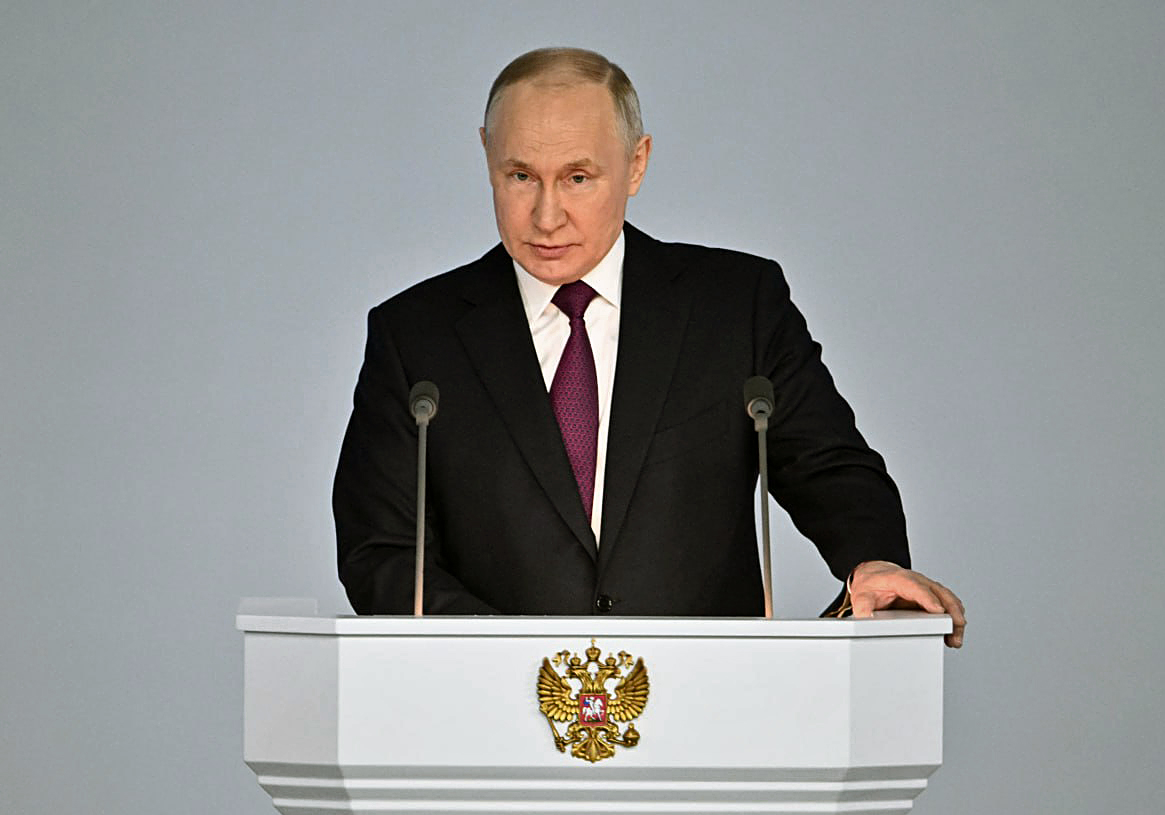Vladimir Putin has won six more years in the Kremlin with a landslide victory in an election where he faced no serious competition. Looking ahead, he faces important challenges.
UKRAINE WAR
Challenge: whether to escalate now and when to stop.
Russia controls nearly a fifth of Ukraine, barely changed since late 2022. Putin has not defined territorial goals but his ally Dmitry Medvedev said last month that Russia aimed to bite off much more of Ukraine, including Odesa and eventually Kyiv.
Putin could just let the war grind on, calculating that time is on his side and awaiting the outcome of the U.S. election in November. Russia made its first advance in nine months by capturing the town of Avdiivka in February and Putin has said it will press further. Ukraine is running low on ammunition as a big U.S. aid package has been held up in Congress, and Russia has been encouraged by signs of discord and faltering resolve in the West.
Putin could escalate by embarking on a new military mobilisation, on top of the call-up of 300,000 men he ordered in September 2022. But that first wave was chaotic and unpopular, prompting hundreds of thousands of Russians to flee abroad. The Kremlin has repeatedly said there is no need for a repeat.
Putin could seek a negotiated outcome. Russia has said this would have to be on its terms, leaving it in control of captured Ukrainian territory, which Kyiv has said it will never accept. It was reported last month that Putin had signalled to Washington that he was ready to agree a ceasefire that would freeze the war at current lines. Washington rejected this after contacts between intermediaries.
TRADE AND ENERGY
Challenge: re-routing trade to blunt Western sanctions
Russia has lost most of its lucrative European energy market because of sanctions and the blowing-up of the Nord Stream gas pipelines. Progress on three major projects will be a gauge of his success in pivoting Russian trade eastwards.
A new “gas hub” in Turkey to enable Russia to reroute its gas exports, a new pipeline, the Power of Siberia 2, to bring another 50 billion cubic metres a year of Russian gas to China via Mongolia and an expansion of the Northern Sea Route, made possible by the melting of Arctic sea ice, to link Murmansk near Russia’s border with Norway to the Bering Strait near Alaska.
NUCLEAR WEAPONS
Challenge: setting new security framework with U.S. or entering a new arms race.
The New START treaty that caps the number of strategic nuclear warheads that Russia and the United States can deploy is due to expire in February 2026. If it lapses, both sides could then expand their arsenals without limits. Putin has said Russia must maximise its return on defence spending to prevent the U.S. from “exhausting” it in the kind of arms race that sapped the Soviet Union during the Cold War.
He said Russia was continuing to develop “several new weapons systems”, while denying U.S. assertions that he plans to deploy nuclear weapons in space. Putin has suggested that Russia might resume nuclear testing, but only if the U.S. does so first. Russia says it is ready to engage in “strategic dialogue” with the U.S. but that this must include all issues affecting its security, including Ukraine.
DOMESTIC ECONOMY
Challenges: inflation, labour shortages, demographics.
The economy grew 4.6% year-on-year in January, thanks to a massive increase in military production, but labour shortages and low productivity pose problems. Defence and security make up about 40% of the budget, squeezing other areas like education and health.
Wages are rising, especially in regions where defence industries are concentrated. But Putin has failed to deliver on a 2018 promise to achieve a “decisive breakthrough” in living standards, and real incomes overall have stagnated for the past decade. Near-term priorities are to cut inflation, running at 7.6%, and to reduce budgetary strains.
Putin has signalled this will mean higher taxes for firms and wealthier individuals. Further out, he wants to raise life expectancy and boost the birth rate with measures to support families, but is struggling to reverse Russia’s long-term population decline.
RENEWING THE ELITE
Challenge: refreshing an ageing team.
Putin will be 77 by the end of his new term – though still younger than U.S. President Joe Biden when he was sworn in. Some leading figures in Putin’s circle are older than he is, including FSB security chief Alexander Bortnikov (72), Security Council head Nikolai Patrushev (72) and Foreign Minister Sergei Lavrov (74 this week). Defence Minister Sergei Shoigu and Chief of Staff Valery Gerasimov (both 68) have kept their jobs despite fierce criticism from some pro-war commentators over Russia’s military failings in Ukraine.
Putin has long shown himself to be reluctant to shake up his team, and critics have accused him of prizing loyalty over competence.
Younger figures to watch include parliament speaker Vyacheslav Volodin (60), agriculture minister Dmitry Patrushev (46) and Putin’s former bodyguard Alexei Dyumin (51), the governor of Tula region. In a first significant personnel change, Boris Kovalchuk, 46, the son of Putin’s businessman friend Yuri Kovalchuk, left his post as head of the Inter RAO utility company this month after 15 years to join the presidential administration, Vedomosti newspaper reported.
(Inputs from Reuters)














